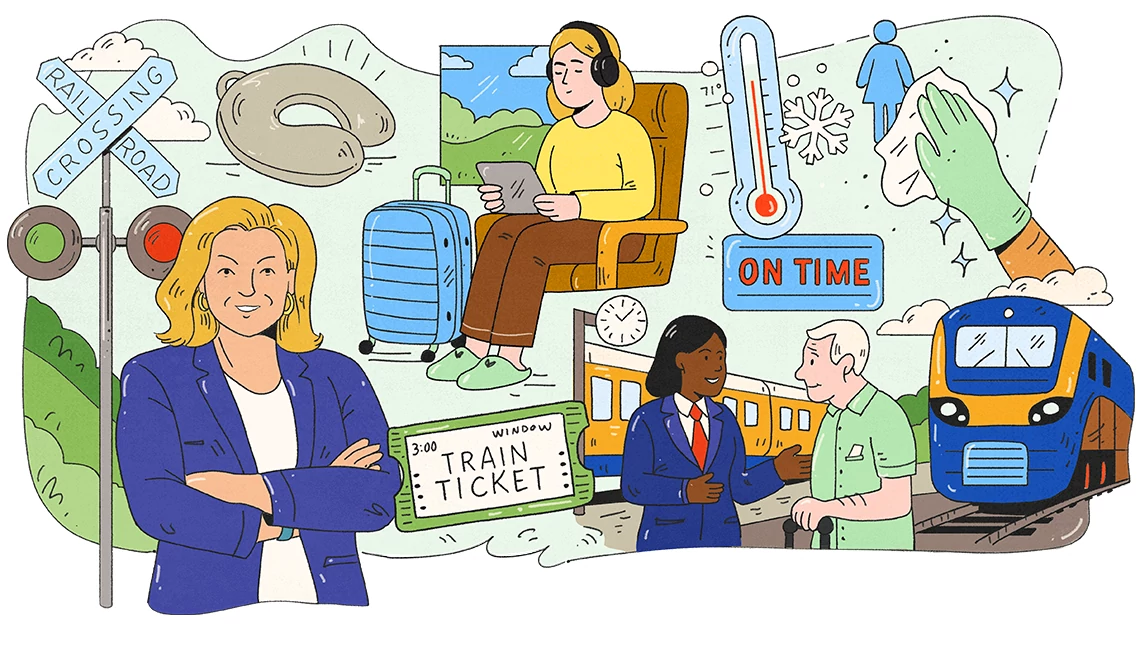AARP Hearing Center

In early April, Lonnie Duberstein, who lives in a suburb of St. Paul, realized he needed to increase the tax withholding from his Social Security benefit.
The 75-year-old retiree began that seemingly simple task with an unsuccessful attempt to log in online, followed by two futile calls to the Social Security Administration—with a combined four and a half hours spent on hold—plus an in-person visit to his field office.
Although Duberstein was eventually able to get the withholding changed, the saga left him anxious about the future of a program that many older Americans depend on.
Social Security has long faced customer service challenges, including extended phone wait times. But the problem has become especially pressing in recent months, with the Social Security Administration being one of the federal agencies targeted for workforce reductions and other changes. That comes on top of ongoing concerns about the program’s future financial solvency.
“People are very concerned about what’s taking place at Social Security,” says Cathy McLeer, AARP Minnesota state director. “We’ve all paid into it through hard work, and we expect it to be there when we need it.”
As the program approaches its 90th anniversary in August, AARP is planning events around the state where Minnesotans will be able to share their stories and learn about changes. Among other activities, the organization will host a baseball game tailgate in Rochester and an ice cream social in Minneapolis.
AARP will also have staff and volunteers at Farmfest in Redwood County and the State Fair in Falcon Heights, both in August. A list of events can be found at aarp.org/mnevents.
A Retirement Lifeline
Federal data shows that more than 1.1 million Minnesotans—nearly one in five state residents—receive Social Security benefits; 79 percent of them are retired. Other recipients are workers with disabilities, surviving spouses and children.
In December 2023, the average monthly benefit check was $1,888 for recipients in the state, according to federal data. Research by the AARP Public Policy Institute shows that 43 percent of Minnesotans age 65 and older—424,450 people—rely on Social Security for at least half of their retirement income.
The Social Security Administration has been targeted for workforce reductions, with a goal of shedding 7,000 employees. As of mid-April, 40 of the agency’s approximately 1,200 field offices had lost at least 25 percent of their staff. And three offices—including one in Alexandria, in Douglas County—were slated to lose at least half their staff, according to the agency.
“That’s a huge concern when people are spending hours and hours on the phone just to conduct some very minor transaction with Social Security,” says McLeer. The concerns are particularly acute in rural areas, where some people have to drive 100 miles or more to get to their nearest Social Security office, she says.
Social Security also faces questions about its future solvency. According to the 2025 Social Security Board of Trustees report, the program is paying out more to recipients each year than it collects in revenue. Unless Congress takes action by 2034, the program will only be able to pay out about 81 percent of its scheduled benefits, the trustees estimate.
Fearful of possible cuts, Phyllis Emmel, 81, a retired counselor from Moorhead, and her husband, Bruce, 83, a retired math professor, have recently started to reduce their spending and charitable giving.
“My life would be just drastically changed” if benefit payments are reduced, Phyllis Emmel says. Her husband has a pension from his teaching job, but Social Security represents about half their monthly income, she says.
As part of the 90th anniversary events, AARP will focus on hearing from Minnesotans about how important Social Security is—or will be—to their retirement security.
“Social Security has helped people retire with dignity for the last 90 years, and it’s up to us to make sure it’s there for generations to come,” says McLeer.
Mary Dieter, a freelance journalist, spent two decades covering Indiana state policy and politics for The Courier-Journal of Louisville, Kentucky.
Also of interest:
- Celebrating Social Security as It Turns 90
- Meet 7 Americans Who Depend on Social Security Payments
- How Social Security and Medicare Transformed Aging in America































































